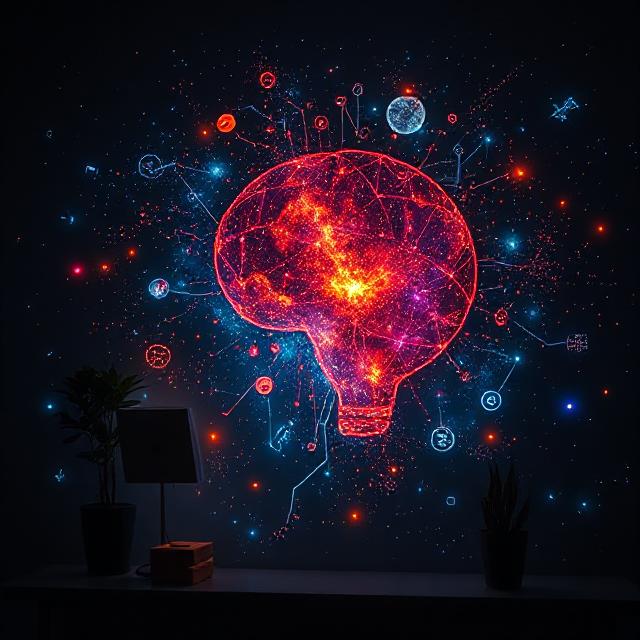
Table of Contents
Can You Train Your Brainwaves with Habit Alone?
Your brain is a rhythm machine.
Every thought, mood, and state of focus corresponds to a specific brainwave patternâpulses of electrical activity in the brain, measured in hertz. These brainwaves arenât random. They follow your actions, your environment, and especially your habits.
But here’s the deeper truth: repeated behavior changes brainwave dominance.
This article explores how daily routinesâlike morning walks, journaling, or focused workâcan condition your brain to shift into healthier, more productive mental states. Without special devices or exotic supplements, your lifestyle becomes your neurotechnology.
đ§ Brainwave Basics: What Are You Really Training?
There are five core brainwave bands:
| Type | Frequency | State |
|---|---|---|
| Delta | 0.5â4 Hz | Deep sleep, repair |
| Theta | 4â8 Hz | Creativity, intuition, light sleep |
| Alpha | 8â12 Hz | Calm alertness, reflection |
| Beta | 13â30 Hz | Focused attention, cognition |
| Gamma | 30â100+ Hz | Integration, insight, memory binding |
Each of these states is usefulâbut the key is intentional access.
Most people drift between states based on noise, stress, caffeine, or exhaustion. But you can train your brain to enter desired states on commandâand that training is called habit.
đ Neuroplasticity: Why Habits Reshape Brainwaves
Neuroplasticity is your brainâs ability to rewire itself. Every time you:
- Wake up at the same time
- Begin a focus session with the same cue
- Meditate at night
- Eat at set intervals
- Walk after meals
âŚyour brain builds and strengthens specific neural loops. These loops fire in tandem with certain brainwave patterns. And over time, they become default circuitsâthe path of least resistance.
What fires together, wires together.
What you repeat, you become.
Thatâs why habit is the most natural way to train brainwave states.
đ§ââď¸ Alpha State Training: Calm Alertness on Demand
Alpha is the âflow entry gate.â Itâs the transition from active thinking to reflective, absorptive awareness.
Habits that train alpha:
- Morning journaling with pen and paper
- Walking outdoors without audio input
- Eyes-closed breathing before tasks
- Listening to ambient music before studying
- Visualizing goals quietly before the day begins
With enough repetition, these habits become cues. Just sitting at your journal or walking that same route signals the brain: time to enter alpha.
Alpha is the preparation stateâideal for learning, shifting from stress, or absorbing new ideas.
đ Beta Wave Training: Controlled Focus without Overdrive

Beta gets a bad rap because of its association with anxietyâbut mid-beta is your best friend for focused work.
You can habitually tune beta through:
- Pomodoro sessions (25 min focus / 5 min rest)
- Mentally demanding puzzles at the same time daily
- Studying in a fixed physical location
- Habit stacking: e.g., coffee â desk â single task
- Setting micro-deadlines (urgency triggers beta)
The goal isnât to force concentrationâitâs to ritualize it. Over time, beta becomes your entrained response to the workspace.
Beta peaks when action meets urgencyâbut collapses with chaos. Ritual prevents that.
đ¤ Delta Conditioning: Deeper Sleep via Rhythm
Delta waves rule your deepest, most regenerative sleep. And you canât force deltaâbut you can set the stage.
Habits that enhance delta:
- Fixed bedtime and wake time (yes, even weekends)
- Dimming lights 2 hours before sleep
- Avoiding screens 1 hour before bed
- Night fasting: no food 3â4 hours before sleep
- Light stretching or gratitude journaling at night
These habits tell your body: itâs time to repair.
Without delta, learning doesnât stick. Memory fragments. Emotional resilience weakens. Thatâs why delta training via habit is crucial for cognition.
đ Theta Training: Habitual Access to Creativity
Theta is the dream space. Itâs where insight emerges, and often the missing link for stuck problems.
To train theta:
- Nap regularly (20 minutes)
- Journal immediately after waking
- Lie down and âidle-thinkâ midday
- Take slow, silent walks after creative sessions
- Practice single-task boredom (e.g., dishwashing without distraction)
The key is non-linear input. Theta strengthens when you stop trying to âfigure things outâ and instead let ideas surface.
Creativity often comes in the space after effortânot during it.
⥠Gamma Tuning: Repeated Synthesis Trains Insight
Gamma isnât easily accessibleâit arises when different brain areas synchronize. But long-term habits help:
- Syntopic learning: comparing diverse sources around a topic
- Teaching others (forces integration)
- Meditation with open awareness
- Reflective journaling after focus sessions
- Reviewing patterns weekly (via mind maps or summaries)
These habits train your brain to move from information to integration.
Gamma is less about speed and more about resonance. It’s the wave of synthesis.
𧊠The Key Principle: Habits = Brainwave Anchors
Think of your habits as anchors. Repeating them creates predictable inner states. Hereâs how it works:
| Habit Cue | Brainwave Outcome |
|---|---|
| Dim lights, stretch â Journal | Alpha |
| Sit at same desk, timer on | Beta |
| Walk after lunch | Theta |
| No food after 7 PM | Delta |
| Reflective summary on Sunday | Gamma |
Over time, your brain says:
“Iâve been here before. I know what state this requires.”
And like that, you switch modes without willpower.
đ Final Takeaway: Habit Is the Oldest Neurotech
You donât need fancy wearables or nootropics to shift your mental state.
You need repetition, cues, and intention.
When you ritualize rest, your brain learns to sleep.
When you ritualize effort, your brain learns to focus.
When you ritualize insight, your brain learns to connect ideas.
You can train your brainwavesâwith habit alone.
